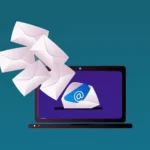Emails remain one of the most widely used communication tools, but crafting the perfect message can be time-consuming. This is where AI-powered email generators come into play, transforming the way we write emails by automating and optimizing the process.
Popular AI email generators include:
ChatGPT (by OpenAI)
GrammarlyGO
Jasper
Copy.ai
HubSpot’s AI Email Writer
Here’s how they typically function:
User Input – The user provides a prompt (e.g., “Write a professional follow-up email after a job interview”).
Context Analysis – The AI interprets the request, considering tone, intent, and key details.
Content Generation – The tool drafts an email, ensuring proper grammar, structure, and relevance.
Customization Options – Users can refine the output by adjusting tone (formal, casual), length, or specific details.
Advanced AI models can even learn from user preferences over time, offering more personalized suggestions.
Benefits of using AI email generators
Writing emails manually can be tedious, especially for professionals handling dozens of messages daily. AI generators produce drafts instantly.
AI tools help eliminate grammatical errors, awkward phrasing, and unclear messaging. They can also suggest more persuasive or engaging language.
Sales and marketing teams benefit from AI’s ability to generate personalized bulk emails by inserting dynamic fields (e.g., recipient’s name, company details).
Struggling to start an email? AI provides instant suggestions, helping users overcome mental blocks and maintain a consistent workflow.
Many AI email generators offer multilingual support, making them useful for global teams and cross-border communication.
Potential drawbacks and considerations
While AI email generators are powerful, they have limitations:
Lack of Human Touch – Over-reliance on AI may make emails sound robotic. Users should review and tweak messages to add a personal touch.
Privacy Concerns – Some tools process sensitive data, so choosing a secure, reputable provider is essential.
Context Errors – AI may occasionally misinterpret prompts, leading to irrelevant or inaccurate content.
Best practices for using AI email generators
Provide Clear Instructions – The more specific the prompt, the better the output.
Edit and Personalize – Always review AI-generated emails before sending.
Use for Repetitive Tasks – Ideal for follow-ups, cold emails, and routine correspondence.
Combine with Human Judgment – AI is a helper, not a replacement for critical thinking.

The future of AI in email writing
As AI technology advances, email generators will become even more sophisticated, with features like:
Real-time sentiment analysis to adjust tone dynamically.
Integration with CRM systems for hyper-personalized outreach.
Voice-to-email transcription for hands-free drafting.
While they are not perfect, their benefits far outweigh the drawbacks when used wisely. As AI continues to evolve, these tools will become indispensable for businesses and individuals alike, streamlining workflows and enhancing professional correspondence.
By embracing AI-powered email writing, users can stay ahead in an increasingly digital world—where efficiency and clarity are key.







